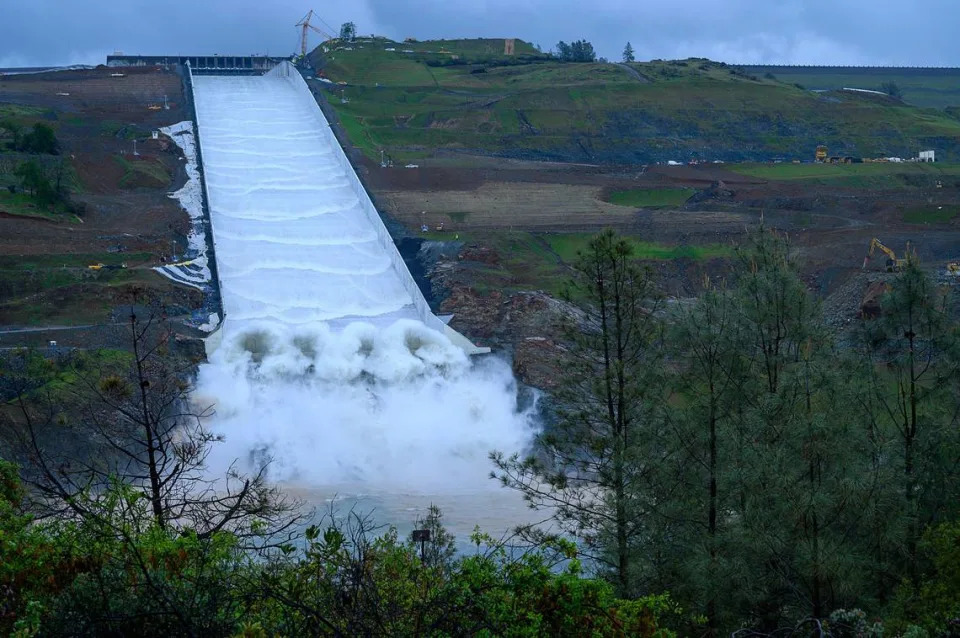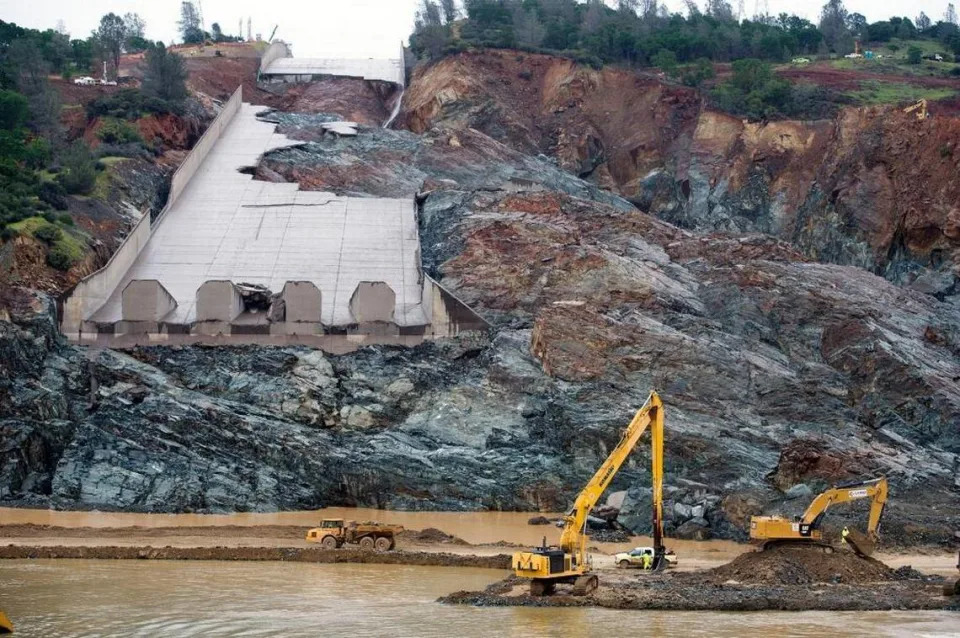The Sacramento Bee
As California gets drenched, officials opening Oroville Dam spillway for first time in 4 years
Michael McGough – March 10, 2023
California water officials opened the main spillway at the Oroville Dam on Friday afternoon, doing so for flood control purposes for the first time since 2019.
Ted Craddock, deputy director of the State Water Project, said the water elevation at Lake Oroville has risen by close to 180 feet since Dec. 1 after a parade of storms this winter, now standing at about 840 feet — 60 feet shy of its maximum.
State water officials began to increase releases from Lake Oroville, which is operated by the state Department of Water Resources, on Wednesday for flood control purposes, Craddock said during a virtual news briefing ahead of the successful spillway opening at noon.
The dam was the center of a 2017 crisis. Torrential rainfall that February damaged the Oroville Dam’s main spillway. When rerouted water threatened failure on the dam’s emergency spillway, more than 180,000 residents downstream of the dam in Butte, Sutter and Yuba counties were ordered to evacuate.
Extensive repairs followed, and state water officials let water flow down the newly rebuilt spillway for the first time on April 2, 2019.
“As part of the reconstruction effort, we installed instrumentation throughout the structure,” Craddock said. “So we can monitor the pressure, drainage and also movement of the spillway as well.”
Spillway flow Friday began at 15,000 cubic feet per second, which Craddock called a “relatively small release.” The spillway is capable of releasing up to 270,000 cubic feet per second.
“As we look further into the upcoming storms, it’s possible we will be making adjustments to our releases,” he said. Releases during the rebuilt spillway’s only prior use, in 2019, peaked at 25,000 cubic feet per second.
Craddock said that due to near-record level snowpack in the Sierra this winter, water officials are confident that snowmelt will help to replenish Lake Oroville following flood releases and the end of the rainy season.
Water releases are also underway at the Folsom Dam, which is operated by the U.S. Bureau of Reclamation.

What is the Oroville Dam?
The Oroville Dam opened in 1968 and is the tallest dam in the U.S. at 770 feet. Located just northeast of Oroville city limits, water from the dam’s main spillway flows into the Feather River.
The main spillway failed catastrophically in February 2017, when a large and cratering fracture formed amid weeks of heavy rain, leading operators to curtail water flow onto the emergency spillway.

The emergency spillway is a concrete lip along a hillside. When water began to spill over the lip, the hillside began to erode, and dam officials feared the emergency spillway would fail and release a “wall of water” downstream. Emergency authorities on Feb. 13, 2017, ordered some 188,000 residents of the Feather River Basin to evacuate.
Dam operators then ramped up water releases on the main spillway, easing lake levels and pressure on the emergency spillway. The emergency spillway held, and evacuation orders were reduced to warnings the following day.
A forensic team in 2018 determined the crisis resulted from “long-term systemic failure” by both state water officials and federal regulators, writing in a nearly 600-page report that design flaws were exacerbated by insufficient repair work over the years.
The crisis cost $1.1 billion, including more than $630 million in spillway repairs.
The Department of Water Resources says repairs and improvements made during 2017 and 2018 have brought the dam up to “state-of-the-art” standards, Craddock said Friday.

